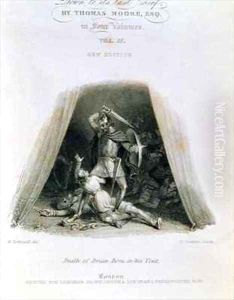Corbould, Henry Paintings
Henry Corbould was an English artist and illustrator, born in 1787 in London. He was part of the Corbould family, a lineage that included several notable artists over generations. His father, Richard Corbould, was a respected painter and illustrator, providing Henry with an artistic environment from an early age. This familial background played a significant role in shaping his career, as he was immersed in the arts and received training not only from his father but also through formal education in the field.
Henry Corbould specialized in watercolor painting and illustration, contributing to the early 19th-century British art scene. He was recognized for his delicate and detailed work, particularly in illustrating literary works and classical subjects. His style was characterized by its elegance and attention to detail, which made his work popular among publishers and the public alike.
Throughout his career, Corbould worked on several prestigious projects. He was involved in designing illustrations for books, which was a highly esteemed job at the time due to the growing popularity of literature and the increasing accessibility of published works to the broader public. One of his notable contributions was his work on illustrations for editions of the works of renowned poets and writers of the era.
Beyond his contributions to book illustration, Corbould also engaged in teaching, passing on his skills and knowledge to the next generation of artists. His commitment to art education highlighted his belief in the importance of nurturing talent and the continuous development of artistic skills.
Henry Corbould's death in 1844 marked the end of a career that had significantly contributed to the British art scene, particularly in the realm of illustration. His legacy, however, continued through the works he left behind and through the influence he had on his students and contemporaries. The Corbould family's artistic heritage, enriched by Henry's contributions, remained influential in the British arts for years to come.
